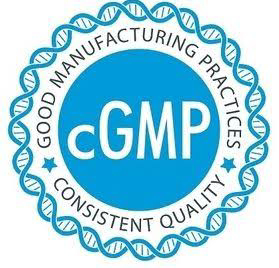When Sterility Test mandated in regulatory
In the British Pharmacopoeia sterility testing was first mandated in 1932 however, before this there were other regulations for specific tests and products specified under the Therapeutic Substances Act.
The WHO were adopted requirement of sterility in 1973.
Sterility testing is absolutely essential for safe pharmaceutical & medical devices. The sterility test assesses whether or not the products contain microbiological contamination, which could be harmful in human health.
What is sterility?
Sterility can be defined as the freedom from the presence of viable microorganisms.
Flow of sterility test:
Media for Sterility testing:
1. Fluid Thioglycollate Medium (FTM):
It is primarily intended for the culture of anaerobic bacteria. However, it will also detect aerobic bacteria.
2. Soybean–Casein Digest Medium (SCDM):
Soybean-Casein Digest Medium is suitable for the culture of both fungi and aerobic bacteria.
Sterility Test Methods:
Sterility test methods mentioned in USP <71> “Sterility Test”.
The three methods of Sterility Testing are membrane filtration, Direct Transfer (Product Immersion) and Product Flush.
1. Membrane Filtration Method for Sterility Testing
The Membrane Filtration Sterility Test is the method of choice for pharmaceutical products. An appropriate use of this test is for devices that contain a preservative and are bacteriostatic and fungistatic under the direct transfer method.
With membrane filtration, the concept is that the microorganisms will collect onto the surface of a sub-micron pore size filter. This filter is segmented and transferred to appropriate media. The test media are fluid thioglycollate medium (FTM) and soybean casein digest medium (SCDM) and incubated for 14 days.
2. Direct Transfer Sterility Testing
This method is the method of choice for medical devices because the device is in direct contact with test media throughout the incubation period.
Viable microorganisms that may remain in or on a product after sterilization have an ideal environment within which to grow and proliferate.
This is especially true with damaged microorganisms where the damage is due to a sub-lethal sterilization process.
All microorganisms have biological repair mechanisms that can take advantage of environmental conditions conducive to growth. The direct transfer method benefits these damaged microorganisms. The entire product should be immersed in test fluid. With large devices, patient contact areas should be immersed.
The method requires that the product be transferred to separate containers of both FTM and SCDM.
The product is aseptically cut, or transferred whole, into the media containers. After being transferred, the samples are incubated for 14 days.
3. Product Flush Sterility Testing
The product flush sterility test is reserved for products that have hollow tubes such as transfusion and infusion assemblies where immersion is impractical and where the fluid pathway is labelled as sterile.
The products are flushed with fluid and the eluate is membrane filtered and placed into FTM and SCDM.
What science behind 14 days incubation time for Sterility test?
Often bacteria require 3-5 days for the growth and fungus require 5-7 days for growth but sterility testing require 14 days of long incubation time because of following two reasons.
1. There are some bacteria which are very slow growing like Propionibacterium acne. P.acne is gram positive, rod shaped, slow growing bacteria which is found in the acne of humans. This bacterium is very slow growing, and it could be the source of product contamination. To recover these type of slow growing microorganisms, 14 days are enough to support the growth of these microorganisms if present in the product.
2. In aseptic environment microorganisms could be in damaged or in injured form so, it requires long time for the recovery of these microorganisms in media. That's why sterility testing require 14 days of long incubation time.
Bulk Drug Products / Biologics and Pharmaceuticals:
Bulk Pharmaceuticals (APIs) are tested for sterility as per USP <71> before release to the manufacturing processes. Bulk Biologics are tested according to 21 CFR 610.12 for sterility testing. This method requires one media (FTM).
NEW Amendments to Sterility Test Requirements for Biological Products Final Rule – 21 CFR Parts 600, 610, and 680.
FDA issues Final Rule on sterility testing of biological products providing greater flexibility for development of sterility test methods. The purpose of the amendments are as follows:
Promote improvement and innovation in the development of sterility test methods.
Address the challenges of novel products that may be introduced to the market in the future.
Potentially enhance sterility testing of currently approved products.
Suitability and Validation:
The USP Sterility Test contains two qualifying assays which must be performed. They are the following.
1. Suitability Test (Growth Promotion Test)
The Suitability Test is used to confirm that each lot of growth media used in the sterility test procedure will support the growth of fewer than 100 viable microorganisms.
If the media cannot support the growth of the indicator organisms, then the test fails. Secondly, a portion of each media lot must be incubated and assessed for sterility according to the incubation parameters established by the method. If the media is found to be non-sterile, then the test fails.
2. Validation Test (Bacteriostasis and Fungistasis Test)
The Validation Test is used to determine if the test sample will inhibit the growth of microorganisms in the test media.
Stasis, in terms of microbiology, is defined as the inability of a microorganism to grow and proliferate in microbiological media. Media that is bacteriostatic does not necessarily kill bacteria; it may simply inhibit bacterial growth and proliferation.
The Validation Test must be performed on each product prior to and/or during sterility testing. This test determines if the media volumes are valid for the particular product. Some medical products contain bacteriostatic and fungistatic compounds that may require special procedures and special media for testing.
This test is similar to the Suitability Test described above, however, the product sample is placed in the media along with the microorganisms. Microbial growth in the presence of the test samples is compared to controls without test samples.
If microbial growth is present in the sample and control containers, the test is valid. Suitability, validation and sterility tests can be performed simultaneously.
Observation and interpretation of results:
At intervals during the incubation period and at its conclusion, examine the media for macroscopic evidence of microbial growth.
If the material being tested renders the medium turbid so that the presence or absence of microbial growth cannot be readily determined by visual examination, 14 days after the beginning of incubation transfer portions (each not less than 1 mL) of the medium to fresh vessels of the same medium, and then incubate the original and transfer vessels for not less than 4 days.
If no evidence of microbial growth is found, the product to be examined complies with the test for sterility. If evidence of microbial growth is found, the product to be examined does not comply with the test for sterility, unless it can be clearly demonstrated that the test was invalid for causes unrelated to the product to be examined.
The test may be considered invalid only if one or more of the following conditions are fulfilled:
1. The data of the microbiological monitoring of the sterility testing facility show a fault.
2. A review of the testing procedure used during the test in question reveals a fault.
3. Microbial growth is found in the negative controls.
4. After determination of the identity of the microorganisms isolated from the test, the growth of this species (or these species) may be ascribed unequivocally to faults with respect to the material and or the technique used in conducting the sterility test procedure.
If the test is declared to be invalid, it is repeated with the same number of units as in the original test. If no evidence of microbial growth is found in the repeat test, the product examined complies with the test for sterility. If microbial growth is found in the repeat test, the product examined does not comply with the test for sterility.
Investigating a Sterility Test Failure:
Investigating a Sterility Test Failure Whenever a sterility positive occurs, lab supervisors are responsible for starting the investigation immediately. Following factors should be evaluated in the basic investigation:
1. Equipment:
Determine whether equipment malfunctioned or was not operated properly. If a malfunction occurred, determine whether it was likely to cause the contamination. Determine if any checklists or logs indicate that the ISO 5 device was in good state of repair at the time of the sterility test. Be aware of the most likely failure modes in the equipment (e.g., laminar flow hood, glovebox, or isolator) used.
2. Adherence to Analytical Method:
Determine whether there were any anomalies or deviations from the analytical method. Adherence to method should be verified at the time of analysis, and any major breach of sterility test procedure should also be documented at that time. If any method breaches occurred, determine whether it was likely to cause the contamination. Be aware of any possible weaknesses in the test method (e.g., kit, manifold, etc.) used.
3. Analyst:
Evaluate the analyst’s qualifications, including proficiency, training record, and experience. Also note whether the sterility testing practice of the analyst was observed during this or a recent analysis.
4. Cleanroom and ISO 5 (Class 100) Environmental Conditions:
Determine if disinfection/decontamination of the ISO 5 device was properly done. Determine whether there was adverse environmental data. Note that a negative control failure, on its own, is not necessarily cause for invalidating a result.
If a negative control was contaminated, consider whether the microbe identified is similar to, or the same as, the sterility test isolate and also consider whether there are other adverse environmental trends.
If an investigation finds that the conduct of the analysis included errors or events that caused the test specimens to be contaminated by the lab environment, the Sterility Test result would be invalid and the substandard laboratory practice should be corrected to prevent this problem from recurring.
Reference:
1. USP <71> Sterility Tests.
2. 21 CFR Parts 600, 610, and 680.
3. PIC/S “Recommendation on sterility testing”
About the Author:


.png)












No comments:
Post a Comment